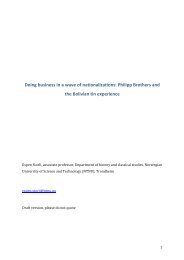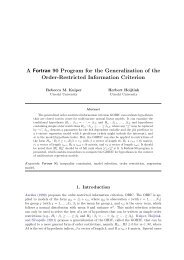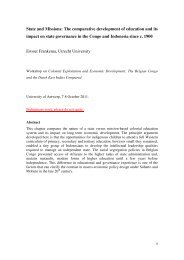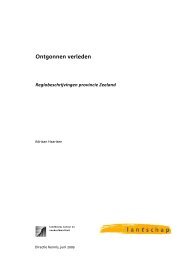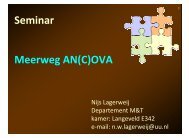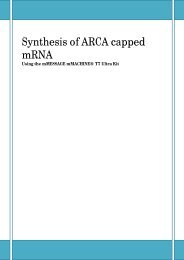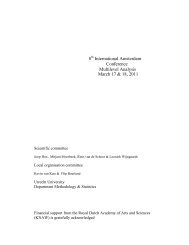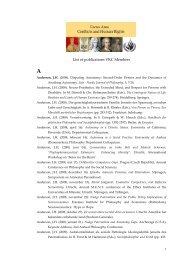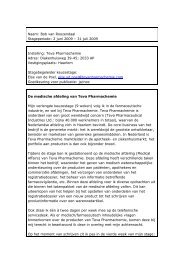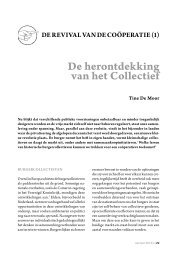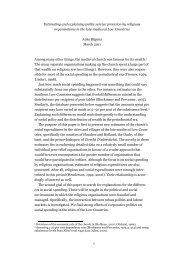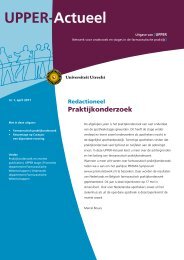New Approaches to Medieval Communication?1
New Approaches to Medieval Communication?1
New Approaches to Medieval Communication?1
Create successful ePaper yourself
Turn your PDF publications into a flip-book with our unique Google optimized e-Paper software.
<strong>New</strong> <strong>Approaches</strong> <strong>to</strong> <strong>Medieval</strong> <strong>Communication</strong>?29one way or another from the beginning of this century – and even long beforethat. Although the bibliography represents only a small selection of work publishedbefore the 1960s and 1970s, it may be helpful <strong>to</strong> see roughly since whenpublications appeared, perusal of which may still be worthwhile at the end ofthe twentieth century. 72Not surprisingly, palaeographers, diplomatists, codicologists and his<strong>to</strong>riansof reading have produced valuable work on the production and use of writtentexts long before the subject of medieval communication had been given aname. The <strong>to</strong>pic of publication before the advent of printing was treated atleast as long ago as 1913; 73 that of the production of books in the vernacular in1920; 74 and the 1925 and 1927 publications of Joseph Balogh on praying,reading and writing aloud are still unsurpassed in the his<strong>to</strong>ry of late antiqueand medieval reading. 75 The interest of the palaeographical study of punctuationfor the his<strong>to</strong>ry of reading, however, did not become apparent until 1968, 76and the study of what space between words might mean for literate behaviourstarted only in 1979. 77The study of non-verbal communication, <strong>to</strong>o, including as it does the objectsstudied by art his<strong>to</strong>ry and musicology, has a long pedigree. Studies ofsmells, colours, clothes and symbolic objects other than what we nowadaystend <strong>to</strong> call works of art, are relatively scarce. The study of gestures, though it<strong>to</strong>o has been broached before the Second World War, 78 has been vigorouslytaken in hand by August Nitschke from 1967 onwards. 79 He has been joinedmore recently by other scholars. 80 Important work has been done on the interactionbetween the visual arts and other media, especially texts. 81 MichaelCamille’s 1985 publication “Seeing and reading: Some visual implications of72 With the exception of the symbolism of the book, correspondence, and mandarin literacy,the sections on which are <strong>to</strong>o short <strong>to</strong> warrant any serious consideration. Similarly, the ‘empty’section on the preservation of written texts has not been taken in<strong>to</strong> account. It is clear, however,that, had these four sections been developed fully, the earliest publications included ought <strong>to</strong>have dated from the nineteenth century ...73 No. 833 (ROOT, 833).74 No. 842 (DEANSLEY, 1920).75Nos. 859 (BALOGH, 1925) and 860 (BALOGH, 1927).76No. 968 (MOREAU-MARECHAL, 1968). See Nos. 946-991.77No. 983 (SAENGER, 1979).78Nos. 379 (LOMMATZSCH, 1910) and 374 (DELLING, 1925).79Nos. 382-389.80 Of whom the most important are Ruth Schmidt-Wiegand (Nos. 392-394) and Jean-Claude Schmitt (Nos. 395-397).81 Nos. 413-457. Early examples are Nos. 449 (STAMMLER, 1962), 454 (ed. FRÜHMORGEN-VOSS and OTT, 1975) and 437 (MOIRAND, 1978).



